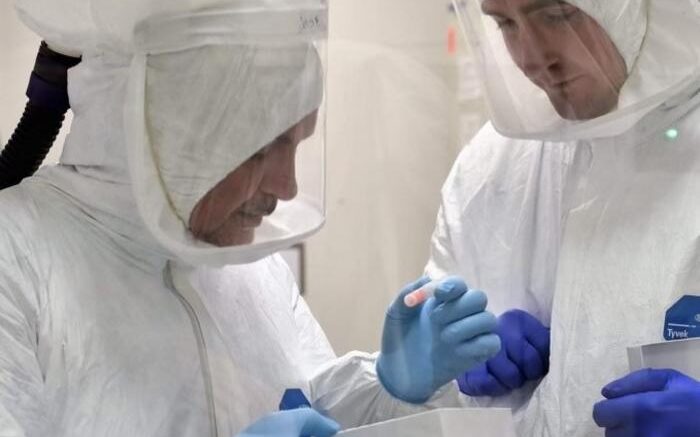One of the earliest and hardest-hit areas of the United States during the COVID-19 pandemic was New Jersey. Hackensack Meridian Health, the state’s largest and most comprehensive health network, played a major role in virus detection and tracking of the virus’s evolution and dynamics, due to the expertise of the Hackensack Meridian Center for Discovery and Innovation (CDI), the network’s research institute.
Now, the CDI experts have published their findings in tracking nasal swabs of thousands of patients over a critical 18-month period of the pandemic, with the results published this month in the journal Viruses.
Many of the findings reinforce common understandings of the COVID-19 pandemic - but the data provides compelling new evidence about how important vaccination is.
“Overall, the results reinforce the positive impact of COVID-19 vaccination and the public health benefits of conducting genotypic surveillance of SARS-CoV-2 across a large hospital network,” conclude the authors, led by José Mediavilla, MBS, MPH, infectious disease laboratory supervisor in the laboratory of Barry Kreiswirth, PhD, and co-first author Tara Lozy, biostatistician.
The facts established include:
- The CDI team assessed more than 5,000 nasopharyngeal swabs of patients from nine HMH hospitals, from December 2020 to June 2022.
- The cross-sectional view of this part of the pandemic assessed the de-identified swabs to include variants, vaccination status, clinical outcomes, and underlying risk factors.
- The scientists essentially tracked the evolution of the virus, especially in the appearance of successive variants. The major strains identified were Alpha, Delta, and Omicron, the last of which included subvariants BA.1, BA.2, and BA.4/5.
- Unvaccinated individuals made up roughly 80 percent of ICU admissions and ventilator cases, each. Approximately 75 percent of the deaths were among unvaccinated patients, as well.
- Approximately 31.5 percent of the total samples were considered “vaccine breakthrough” cases - most of which were counted during the Omicron waves.
- Comorbidities among the group were a significant driver of increasing severity of disease, including ICU admission, ventilator use, and death.
- Age was the most significant factor for such progressively serious outcomes.
“This was an important undertaking,” said Mediavilla. “We look at this as one source of ground truth for the changing epidemiology of this pandemic, so that science can better understand real-time evolution of a high-threat respiratory virus.”
Other authors on the paper include: Kreiswirth, who is also a professor at the Hackensack Meridian School of Medicine; David Perlin, PhD, the chief scientific officer and executive vice president of the CDI, also on faculty at the Hackensack Meridian School of Medicine; Yanan Zhao, MD, PhD, of the CDI, also with the Hackensack Meridian School of Medicine faculty; other colleagues from the CDI and Hackensack Meridian Health, including the Hackensack Meridian Health Research Institute’s Biorepository; and also colleagues from the New York Genome Center and the New Jersey Department of Health, who were partners in the sequencing project.
The lessons learned from molecular studies of SARS-CoV-2 and its ability to overcome protection from vaccination and natural infection could be a cautionary tale, as preparation begins for the rollout of new vaccines against viral threats like respiratory syncytial virus (RSV).
Source: Hackensack Meridian Health
